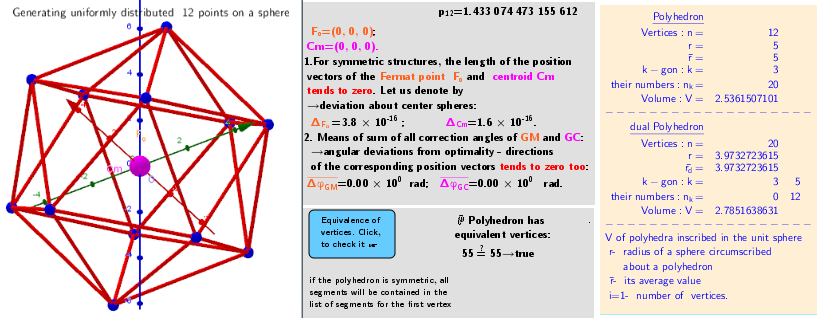Icosahedron, n=12. Polyhedra with extreme distribution of equivalent vertices.
The coordinates of the polyhedron are taken from the applet: Polyhedra whose vertices are equivalent and have an extreme distribution on the same sphere.
The first applet sorts and finds the vertices, surface segments, faces, and volume of the polyhedron and its dual image.
The second applet colors the edges and faces of the polyhedron and its dual image.
All applets are in the Book: Polyhedra with extreme distribution of equivalent vertices :
Polyhedra whose vertices are equivalent and have an extreme distribution on the same sphere.
* n=4: Tetrahedron; n=6: Octahedron; n=8: Cube, Square Antiprism; n=12: Icosahedron, Cuboctahedron,Truncated Tetrahedron; n=20: Dodecahedron; n=24: Biscribed Snub Cube, Truncated Cube, Biscribed Truncated Octahedron; n=30: Icosidodecahedron; n=48: Biscribed Truncated Cuboctahedron; n=60: Biscribed Snub Dodecahedron, Rhombicosidodecahedron, Biscribed Truncated Icosahedron, Truncated Dodecahedron; n=120: Biscribed Truncated Icosidodecahedron.

5. n=12; Icosahedron -Platonic Solids
This extreme distribution can be obtained for n=12 in the applet - "The problem of extreme distribution of points on the surface of a sphere". Here, the extreme vertex distribution is found by the Lagrange multipliers method using an iterative procedure. It should be noted, that the initial vertex distribution in the iterative procedure is not significant.